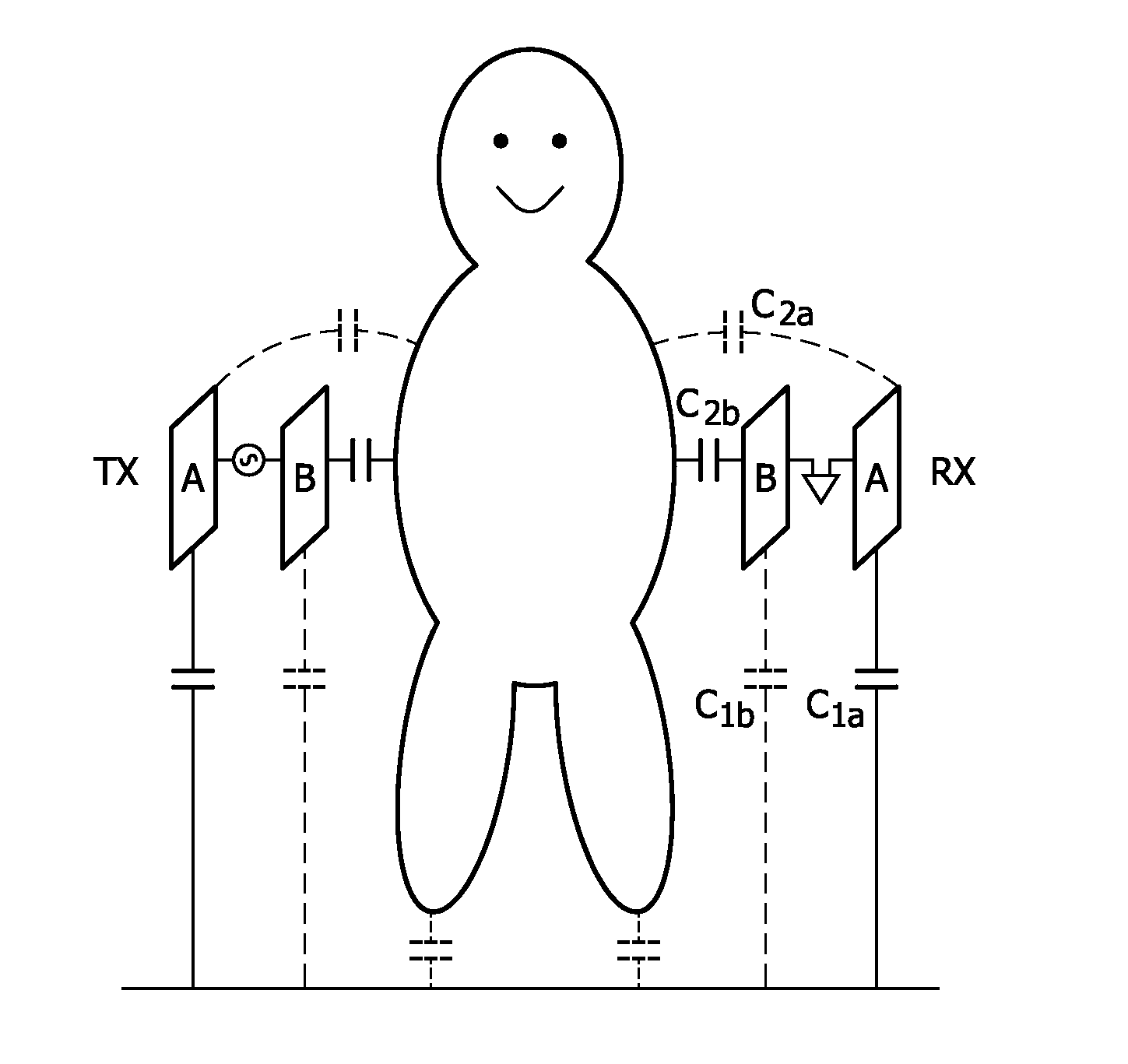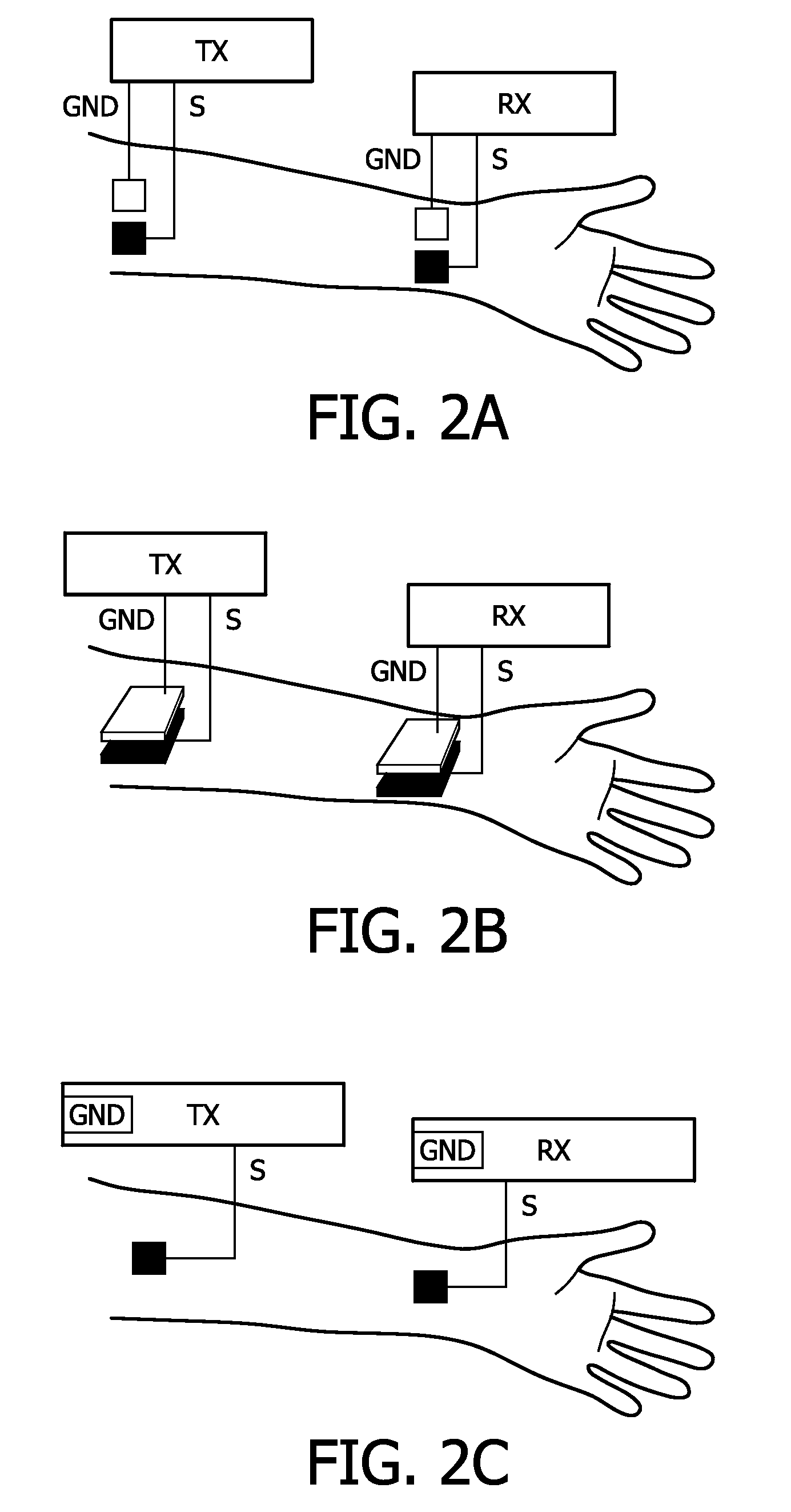Electrode diversity for body-coupled communication systems
a technology of electronic diversity and communication system, which is applied in the direction of fire alarm radiation actuation, instruments, and voice advertising, etc., can solve the problems of reducing the power of received signal, unable to provide signal to the body, and unable to transfer signal, so as to increase the robustness and user convenience
- Summary
- Abstract
- Description
- Claims
- Application Information
AI Technical Summary
Benefits of technology
Problems solved by technology
Method used
Image
Examples
Embodiment Construction
[0041]Various embodiments of the present invention will now be described based on a BCC system as an alternative to radio frequency (RF) communication for PANs and BANs. As already mentioned above, BCC signals are conveyed over the body instead of through the air. As such, the communication is confined to an area close to body, in contrast to RF communications, where a much larger area is covered. Therefore, TX and RX devices are situated on, connected to, or placed close to the body. This creates possibilities for many applications in the field of identification and security. Moreover, since lower frequencies can be applied than in RF communications, it opens the door to low-cost and low-power implementations of BAN / PAN. Data signals are not transmitted by antennas but using “couplers”, consisting of e.g. electrodes. These couplers are configured to couple, e.g. galvanic or capacitive, the data signals to the body.
[0042]FIGS. 2A to 2C show possible electrode configurations for a BC...
PUM
 Login to View More
Login to View More Abstract
Description
Claims
Application Information
 Login to View More
Login to View More - R&D
- Intellectual Property
- Life Sciences
- Materials
- Tech Scout
- Unparalleled Data Quality
- Higher Quality Content
- 60% Fewer Hallucinations
Browse by: Latest US Patents, China's latest patents, Technical Efficacy Thesaurus, Application Domain, Technology Topic, Popular Technical Reports.
© 2025 PatSnap. All rights reserved.Legal|Privacy policy|Modern Slavery Act Transparency Statement|Sitemap|About US| Contact US: help@patsnap.com



